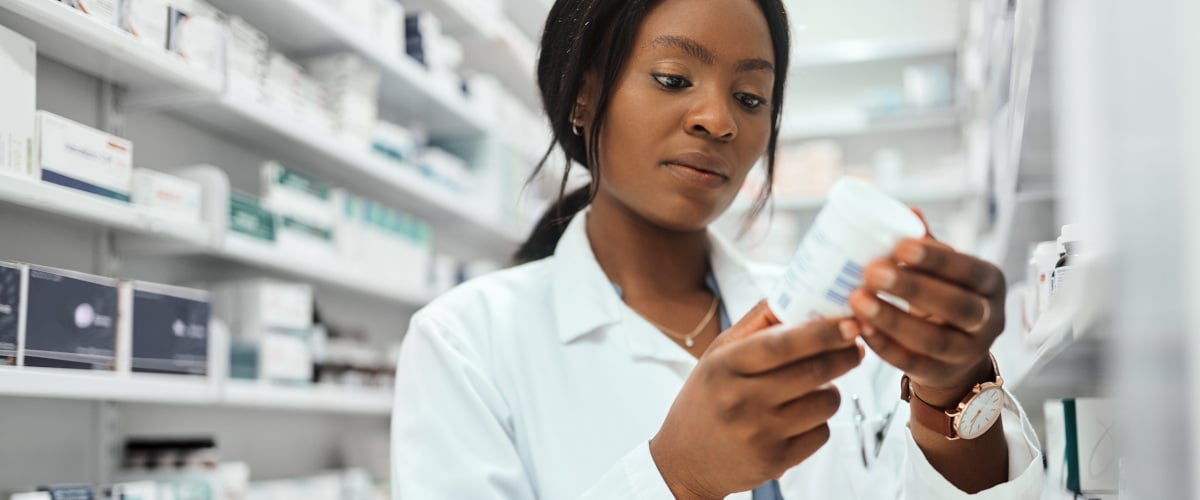
Would it be better for patients to take more of a medication that may end up costing private drug plans about $200 a year, or start a new medication that costs upwards of $15,000 a year?
The answer may seem obvious, but the challenge is knowing to ask the question in the first place. As part of its annual conference on May 17, TELUS Health crunched the numbers and showed that it’s better—for both patients and payers—to take initial medications as prescribed in order to prevent or delay the use of higher-cost therapies.
“Adherence matters,” concluded Vishal Ravikanti, Director, Pharmacy Consulting and Partnerships, Health Benefits Management at TELUS Health, who presented the data.
TELUS Health measures adherence by capturing whether or not claimants refill their prescriptions on time. Its analysis assessed the claims history for more than 3,000 claimants taking a biologic to treat their rheumatoid arthritis, at an average annual eligible cost of about $15,800. All had started treatment with first-line therapy that costs about $200 a year. Claimants with higher rates of adherence to first-line therapy did not start on the biologic until four to six years had passed, while those who had lower rates of adherence began taking biologics within one or two years of starting the first-line therapy.
Supporting adherence for just one person with rheumatoid arthritis—which is the highest-cost drug category based on eligible amounts—can save plans tens of thousands of dollars, summarized Ravikanti. “This makes a very compelling case for improving adherence. The challenge is how best to do that,” he said.
Mobile apps and virtual pharmacy can help by reminding patients and caregivers to refill prescriptions for their first-line therapies. A form of case management, triggered by patterns in claims activity that suggest non-adherence or a worsening of the condition, may be worthwhile for members with more complex reasons for non-adherence. “These are discussions that need to be had,” advised Ravikanti.
The presentation also provided insights on major trends in medication management, including the impact of COVID-19. Here are highlights:
Impact of COVID-19 – The number of new claimants for antidepressants increased by more than 50% compared to 2020. “This could be the effect of COVID-19 on mental health, combined with patients who may not have sought treatment in 2020,” said Ravikanti.
In the cancer category, the number of new starts had increased by just under 20% in the two years prior to the pandemic. The growth rate declined in 2020, then jumped to 25% in 2021. “Unfortunately, the pause in 2020 may mean that patients progressed into later stages of cancer before they were diagnosed, and that will have downstream impacts,” he noted.
New starts for drugs to treat high blood pressure or high cholesterol increased by more than 50% in 2021. “This is interesting because these conditions are ‘silent.’ The large jump suggests that patients are starting to get back to seeing their physicians and getting routine screenings and checkups.”
Delayed diagnoses and treatments may have downstream impacts for all chronic conditions, he added. “They may be harder to treat and we may see the use of higher-cost treatments earlier on. It’s also possible that there are multiple factors beyond just the delayed blood pressure treatments or a delayed diabetes diagnosis. Other disease states may start to creep in.”
Highest-cost claimants – Soliris, an intravenous drug to treat rare blood disorders, was used by 59 claimants in 2021, with a total eligible cost of $30.1 million submitted to private drug plans.
The top 10 most costly medications amounted to $52.5 million in eligible costs, for 112 claimants. In 2020, there were 104 claimants. “We are seeing growth in costs as well as utilization. This is likely a trend that will continue as more patients require treatments for rare disease and potentially as these products receive approvals for new indications,” said Ravikanti.
Virtual pharmacy – Since the last quarter of 2018, the number of claimants using a virtual pharmacy at least once increased by 500%, while the number of claims increased by 300%. The difference between users and volume of claims “suggests that many of the new users to a virtual pharmacy may be on fewer medications overall,” noted Ravikanti.
TELUS Health’s data also shows that use of virtual pharmacies, which deliver prescriptions by mail only and do not have brick-and-mortar retail locations, accelerated during the pandemic.
Top drug categories – Ravikanti presented highlights from the top-10 drug categories by eligible amount. Drugs for inflammatory diseases such as rheumatoid arthritis retain their number-one rank, accounting for 12.6% of the total eligible amount; however, the diabetes category is closing in with a 12.0% share.
The stimulants category—comprised of drugs to treat neurological conditions such as attention deficit hyperactivity disorder (ADHD)—saw the highest growth rate at 19.2%, which was enough to overtake the cancer category for sixth position. “Our initial hypothesis was that this may be linked to students having to do their schooling at home, but what was interesting is that the majority of this growth was driven by adults. It appears that adults were noticing certain behaviors in themselves, perhaps while working from home, and sought medical advice,” observed Ravikanti.
The asthma category’s ranking dropped from fourth to fifth, possibly due to fewer one-off claims for seasonal respiratory illness as a complication of influenza, where case counts have been down significantly during the pandemic. “However, two products, both biologics, did see growth. This is something to keep an eye on,” said Ravikanti.
Get more details—plus updates on biosimilars and the drug pipeline.
